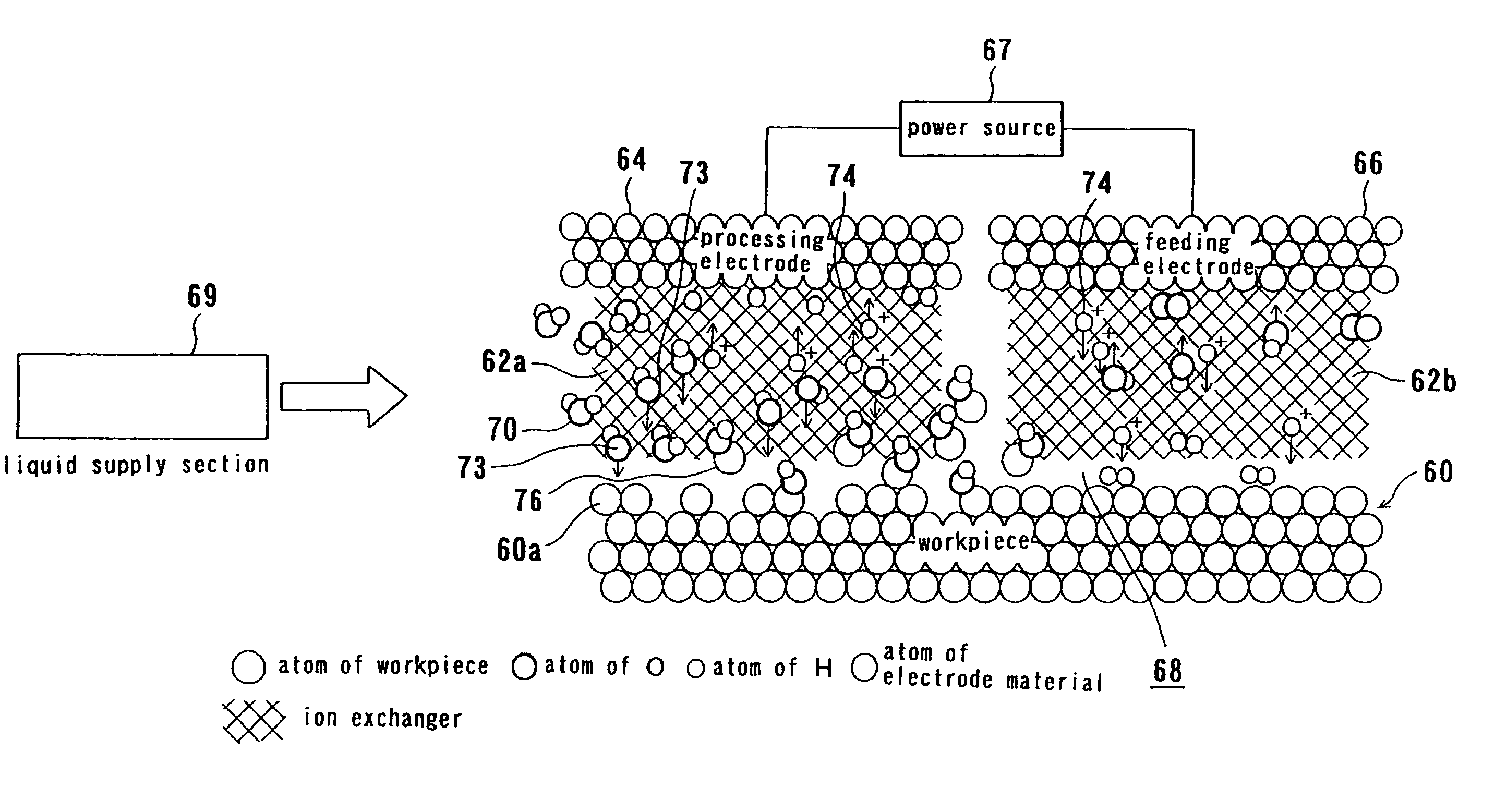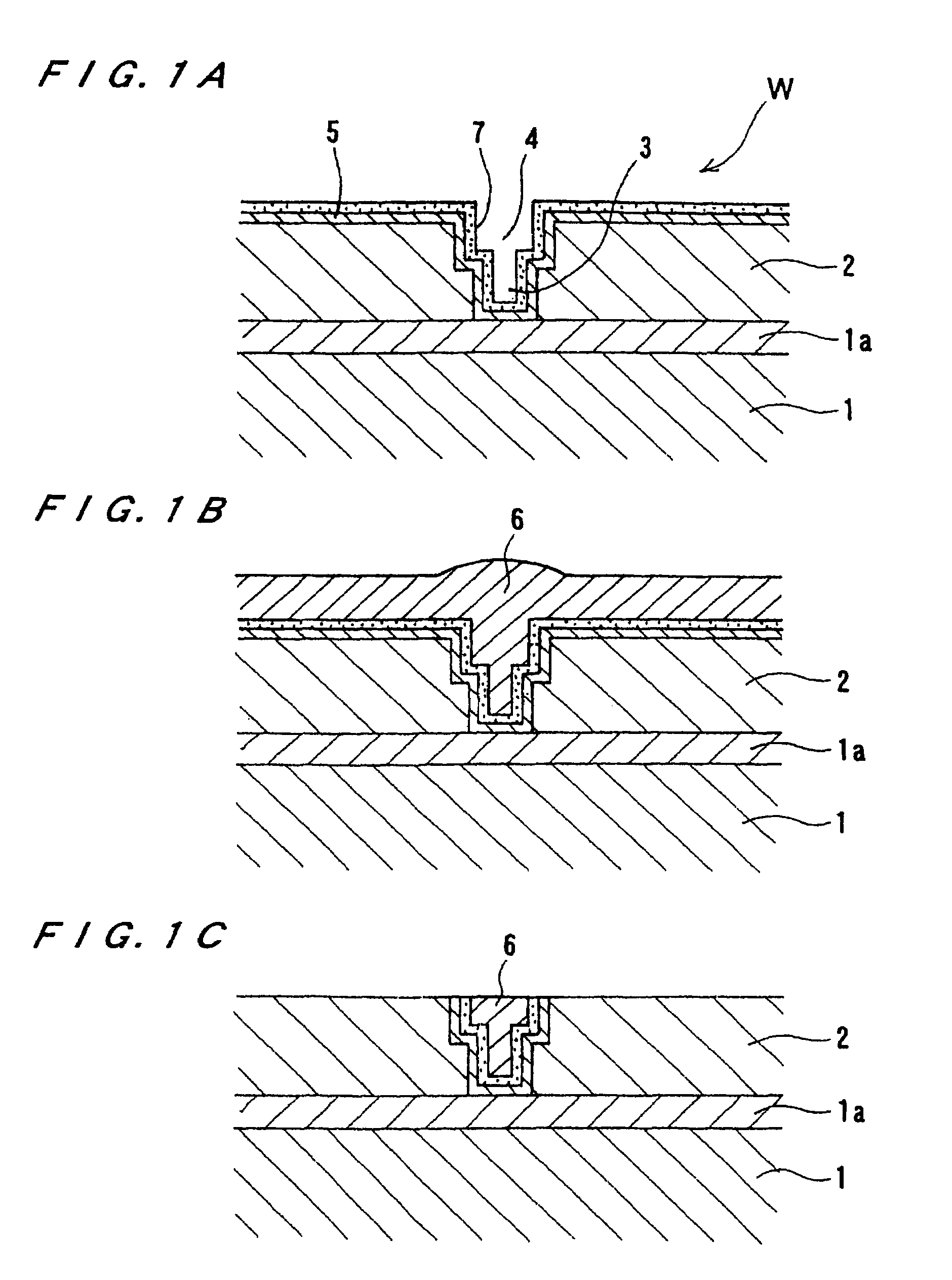Electrolytic processing apparatus and method
a processing apparatus and electrolysis technology, applied in the direction of electric circuits, manufacturing tools, electric circuits, etc., can solve the problems of reducing the performance of dielectric materials, affecting the processing efficiency of dielectric materials, and affecting the quality of dielectric materials, so as to improve the uniform processing rate and improve the evenness of the processed surfa
- Summary
- Abstract
- Description
- Claims
- Application Information
AI Technical Summary
Benefits of technology
Problems solved by technology
Method used
Image
Examples
first embodiment
[0134]FIG. 7 is a partly sectional block diagram schematically showing an electrolytic processing apparatus 50 according to the present invention. The electrolytic processing apparatus 50 comprises an electrode holder 12 for holding a processing electrode 18 as an electrode, an electrode-rotating shaft 13 mounted to the electrode holder 12, a substrate holder 14, provided above the electrode holder 12, for attracting and holding a substrate W as a workpiece or as a feeding electrode, and a substrate-rotating shaft 15 mounted to the substrate holder 14. According to this embodiment, the substrate W functions as a feeding electrode. The electrolytic processing apparatus 50 further includes a power source 23 for applying a voltage or an electric current between the processing electrode 18 and the substrate W, as will be described hereinbelow.
[0135]The electrolytic processing apparatus 50 is also provided with a hollow motor 41 as a substrate-rotating means for rotating the substrate ho...
second embodiment
[0156]FIG. 10 is a partly sectional block diagram schematically showing an electrolytic processing apparatus 50a according to the present invention.
[0157]According to the electrolytic processing apparatus 50a, a processing electrode 118 and a feeding electrode 136 are held by an electrode holder 112. The processing electrode 118 is divided into five processing electrode parts 118-1 through 118-5 by four ring-shaped insulators 140-1 through 140-4, and is peripherally surrounded by a ring-shaped insulator 140-5. In the processing electrode parts 118-1 through 118-5, a number of through-holes 129 are formed as a fluid supply section for supplying an electrolytic solution 102 to the substrate W (one through-hole 129 for each of the processing electrode parts 118-1 through 118-5 is depicted in FIG. 10).
[0158]The outermost insulator 140-5 is surrounded by a ring-shaped feeding electrode 136. The whole processing electrode parts 118-1 through 118-5, the whole insulators 140-1 through 140-5...
fourth embodiment
[0175]FIG. 17 is a vertical sectional view schematically showing the electrolytic processing apparatus 334 according to the present invention. As shown in FIG. 17, the electrolytic processing apparatus 334 includes a pivot arm 340 that can pivot horizontally and move vertically, a substrate holder 342, supported at the free end of the pivot arm 340, for attracting and holding the substrate W with its front surface facing downward (face-down), a disk-shaped electrode section 344 positioned beneath the substrate holder 342, and a power source 346 connected to the electrode section 344. In this embodiment, the size of the electrode section 344 is designed to have a slightly larger diameter than the diameter of the substrate W to be held by the substrate holder 342.
[0176]The pivot arm 340, which pivots horizontally by the actuation of a motor 348 for pivoting, is connected to the upper end of a pivot shaft 350. The pivot shaft 350, which moves up and down integrated with the pivot arm 3...
PUM
| Property | Measurement | Unit |
|---|---|---|
| electric conductivity | aaaaa | aaaaa |
| electric conductivity | aaaaa | aaaaa |
| electric conductivity | aaaaa | aaaaa |
Abstract
Description
Claims
Application Information
 Login to View More
Login to View More - R&D
- Intellectual Property
- Life Sciences
- Materials
- Tech Scout
- Unparalleled Data Quality
- Higher Quality Content
- 60% Fewer Hallucinations
Browse by: Latest US Patents, China's latest patents, Technical Efficacy Thesaurus, Application Domain, Technology Topic, Popular Technical Reports.
© 2025 PatSnap. All rights reserved.Legal|Privacy policy|Modern Slavery Act Transparency Statement|Sitemap|About US| Contact US: help@patsnap.com



